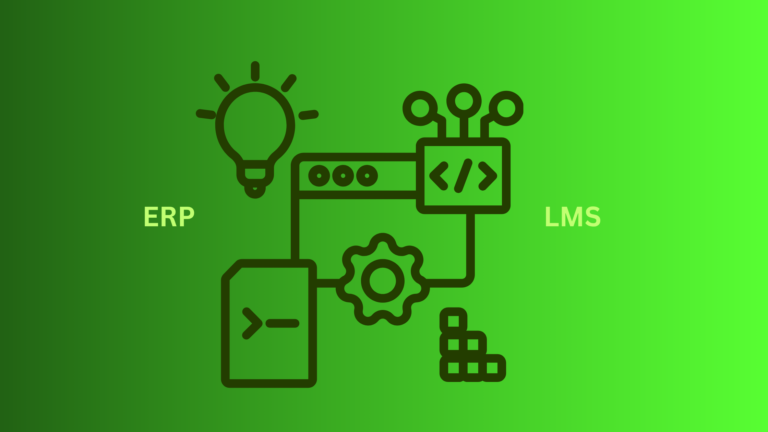In today’s fast-paced world, customers expect more from businesses than just a product or service. They want to feel valued, appreciated, and most importantly, they want to learn. But how can businesses create a learning culture for their customers?
The rise of technology has made it easier for customers to access information and learn about products and services.
However, businesses can take it a step further by providing educational resources and opportunities for their customers to learn and grow.
Building a learning culture for customers can not only improve customer satisfaction and loyalty but also benefit the business in the long run. In this article, we will explore the benefits of creating a culture of learning for customers and provide tips on how businesses can implement it successfully.

Why is building a learning culture for customers important?
Building a learning culture for customers is important because it helps to create a strong relationship between the customer and the company. When customers feel that they are being educated and empowered through the learning resources provided by a company, they are more likely to trust the company and become loyal customers.
Additionally, a learning culture can help customers to better understand and utilize the products or services offered by the company, leading to increased satisfaction and success. Finally, a company that prioritizes customer education and learning is more likely to attract and retain customers who value personal growth and development, creating a positive reputation and competitive advantage in the marketplace.
How to Build a Culture of Learning for Customers?
In today’s fast-paced world, customers expect businesses to provide them with solutions that meet their ever-changing needs. To do this, businesses must build a culture of learning that not only benefits their employees but also their customers. But how can businesses achieve this? Here are some steps to follow if you want to build a culture of learning for your customers.
1. Identify Your Customers’ Learning Needs
The first step in building a culture of learning for your customers is to identify their learning needs. Conduct surveys, interviews, and focus groups to understand what your customers want to learn and how they want to learn it. This will help you create a learning program that meets their needs and expectations.
2. Develop a Learning Program
Once you have identified your customers’ learning needs, it’s time to develop a learning program. The program should be designed to provide your customers with the knowledge and skills they need to use your products or services effectively. It should also be interactive and engaging to keep your customers interested and motivated to learn.
3. Provide Resources and Support
To ensure that your customers have access to the learning program, you need to provide them with the necessary resources and support. This can include online resources, training materials, and customer support teams that are available to answer any questions and provide assistance.
4. Encourage Continuous Learning
Learning should not stop once the initial program is completed. Encourage your customers to continue learning by offering ongoing training and resources. This can include webinars, workshops, and other events that provide opportunities for customers to learn and network with each other.
5. Measure the Effectiveness of Your Program
To ensure that your learning program is effective, you need to measure its impact on your customers. This can be done through surveys, feedback forms, and other metrics that measure the program’s success. Use this feedback to improve and refine the program to better meet your customers’ needs.
Moreover, you can do the following too:
- Provide clear and concise instructions for using your product or service.
- Offer educational resources such as blogs, videos, or webinars.
- Encourage customer feedback and questions to improve their understanding.
- Provide personalized support and guidance to help customers achieve their learning goals.
By following these steps, you can build a culture of learning for your customers that not only benefits them but also your business. A culture of learning can help you build stronger relationships with your customers, increase customer satisfaction, and improve the overall performance of your business.
How can technology help you with building a learning environment for customers?
Leverage virtual interactive sessions to connect with learners anywhere. Take advantage of digital course materials giving customers access to content anytime and anyplace.
YouTube tutorials, webinars, and pre-recorded videos can extend the reach of classes to parts of the world not limited by geography.
Streamline the customer training process by providing personalized learning content tailored to customers’ unique needs.
Gather valuable metrics on student engagement in learning modules and enhance program effectiveness.
Automate processes like customer onboarding, evaluation, and feedback which would save you valuable time as a teacher or trainer.

What can you include in your customer training programs?
When designing customer training programs, it’s important to consider the specific needs and goals of your customers. Here are some key elements that you can include in your customer training programs:
1. Product Knowledge
Provide comprehensive training on your product or service’s features, functionalities, and benefits. This includes explaining how different components work, showcasing use cases, and highlighting key selling points.
2. Hands-on Practice
Offer practical exercises and simulations that allow customers to actively engage with the product. This hands-on approach helps them gain confidence and proficiency in using the product effectively.
3. Best Practices and Workflows
Share industry-specific best practices and workflows that can help customers optimize their use of the product. This can include demonstrating efficient processes, tips, and tricks, and addressing common challenges.
4. Troubleshooting and Support
Equip customers with troubleshooting techniques to address common issues independently. Provide guidance on accessing support resources, such as documentation, knowledge bases, and customer support channels.
5. Customization and Configuration
If your product allows for customization or configuration, guide customers through the process. Help them understand how to tailor the product to their specific needs, ensuring they get the most value from it.
6. Integration and Compatibility
If your product integrates with other systems or platforms, provide training on how to set up and use these LMS integrations effectively. Ensure customers understand the compatibility requirements and any potential limitations.
7. Updates and New Features
As you release updates and new features, offer training sessions or materials that educate customers on the changes. Highlight the benefits and demonstrate how these updates enhance their overall experience.
8. Ongoing Learning Resources
Provide access to a variety of learning resources beyond the initial training, such as online tutorials, video demonstrations, webinars, user forums, and knowledge bases. These resources empower customers to continue learning and discovering new ways to leverage the product.
9. Certification and Progress Tracking
Consider implementing a certification program to recognize customers’ proficiency in using your product. Provide progress-tracking tools or dashboards that allow customers to monitor their learning journey and achievements.
10. Feedback and Evaluation
Regularly gather feedback from customers to assess the effectiveness of the training programs. Use this feedback to make continuous improvements and refine your training approach.
In conclusion, technology can create an effective learning environment for customers. By making use of digital content, virtual sessions, and automated processes, businesses can create a customer-centric learning program that meets the needs of both learners and the business itself.



